Mud Daubers
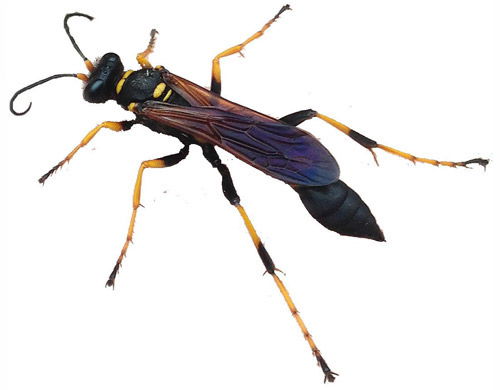
MUD DAUBERS.
KPCOFGS
Kingdom: Animalia
Phylum: Arthropoda
Class: Insecta
Order: Hymenoptera
Family: Sphecidae or Crabronidae
Genus: Sceliphron
Species: S. laetum
Nº of SPECIES: 28 inside the genus Sceliphron.
- Sceliphron abdominale
- Sceliphron argentifrons
- Sceliphron asiaticum
- - Type locality In Indiis was interpreted as India; syn. S. figulum
- Sceliphron assimile
- Sceliphron benignum
- Sceliphron bugabense
- Sceliphron caementarium -- Black and yellow mud dauber
- - North America, established in Europe and Pacific islands by the 1970s
- Sceliphron caucasicum
- Sceliphron chilensis
- Sceliphron coromandelicum
- Sceliphron curvatum
- Sceliphron cyclocephalum
- Sceliphron deforme
- Sceliphron destillatorium
- Sceliphron fistularium
- Sceliphron formosum
- Sceliphron imflexum
- Sceliphron intermedium
- Sceliphron jamaicense
- Sceliphron javanum
- Sceliphron laetum
- Sceliphron madraspatanum
- Sceliphron nalandicum
- Sceliphron quartinae
- Sceliphron rufiventre
- Sceliphron soror
- Sceliphron spirifex
- Sceliphron (madraspatanum) tubifex
SIZE: (S. laetum)
17 to 26 mm long (0.67 to 1.02 inch) long.
It is largely black, with small bold yellow markings.
LIFE SPAN:
At the end of the season, mud daubers die, which corresponds usually from 20 to 45 days after these leave the nest, depending on when the eggs were laid (e.g. late spring).
WORKERS'S LIFESPAN:
Mud daubers are solitary wasps and considered parasitic wasps and they only meet other wasps for mating. Therefore there are no nests with queens and workers.
EGG to ADULT:
An adult mud dauber will build a nest (see below) in order to lay her eggs, but it will not create it the same way social wasps do. The mud dauber will start building the nest, usually containing up to 25 cells, each one containing up to 25 paralyzed spiders. (The organ pipe mud dauber, however, may build up to 6 organ pipes containing various cells each). After the mud dauber has completed a cell, it will leave the nest to hunt for spiders. The sting will paralyze the spiders so that when the larvae hatch, these will feed on the spiders.
The eggs usually hatch between 1.5 and 3.5 days and finish feeding on the spiders over the course of 1 to 3 weeks. This depends on temperature, as when this drops, the larvae (in prepupal stage) will go into diapause (stage) until temperatures rise again in spring and will leave the nest.
NEST INFO & COLONY SIZE:
Mud daubers, or "mud wasps" or "dirt daubers" are wasps whose name makes reference to the fact that they build their nests from mud.
Common places where they build their nests are vertical or horizontal faces of walls, cliffs, bridges, overhangs and shelter caves.
Since there are various types of Mud Daubers, it is very difficult to establish general trends between the nests they all build, so below I will be explaining some examples of Mud Daubers and their nests.
1) Organ Pipe Mud Dauber:
These is a wasp that gets its name because of the shape of the nest they build. The shape of the nest resembles an organ pipe or pan flute. Each "tube" would be like a cell on a paper wasp nest, however, these contain various eggs per "organ pipes", and when these eventually grow up, break through the mud nest, therefore leaving behind the shape of a "flute". This wasp is completely black.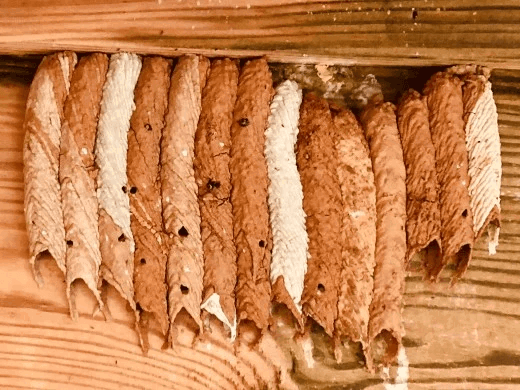
2) Black and Yellow Mud Dauber:
Mud daubers with this colors usually build nests on the ground or use mud to build nests and put there their prey/paralyzed spiders and eggs.
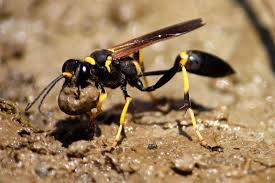
STING:
Mud daubers are not aggressive wasps and are unlikely to sting, moreover, their venom is used to paralyze their prey so it is not harmful for humans. However, it can cause an allergic reaction to people who are allergic to wasps. Symptoms such as skin reactions, nauseas, vomiting, diarrhea and difficulty in breathing may arise on stung allergic individuals.
Mud daubers are known to have a less quantity of venom compared to other social wasps and bees. A common wasp may have up to 10 times more venom within the venom apparatus (where venom is stored)
About the chemical composition of its venom, venom from the Sceliphron genus lacks the antigenic properties, histamines, serotonin, acetylcholine, and small peptides such as pain-producing kinin, that other hymenopteran (wasps) venom contains. This is due to the fact that social wasps and bees use its venom and sting as a defense mechanism, while the mud dauber wasp only uses it to paralyze spiders (prey), and therefore there is no need to produce any pain in the victim.
LOCATION MAP:
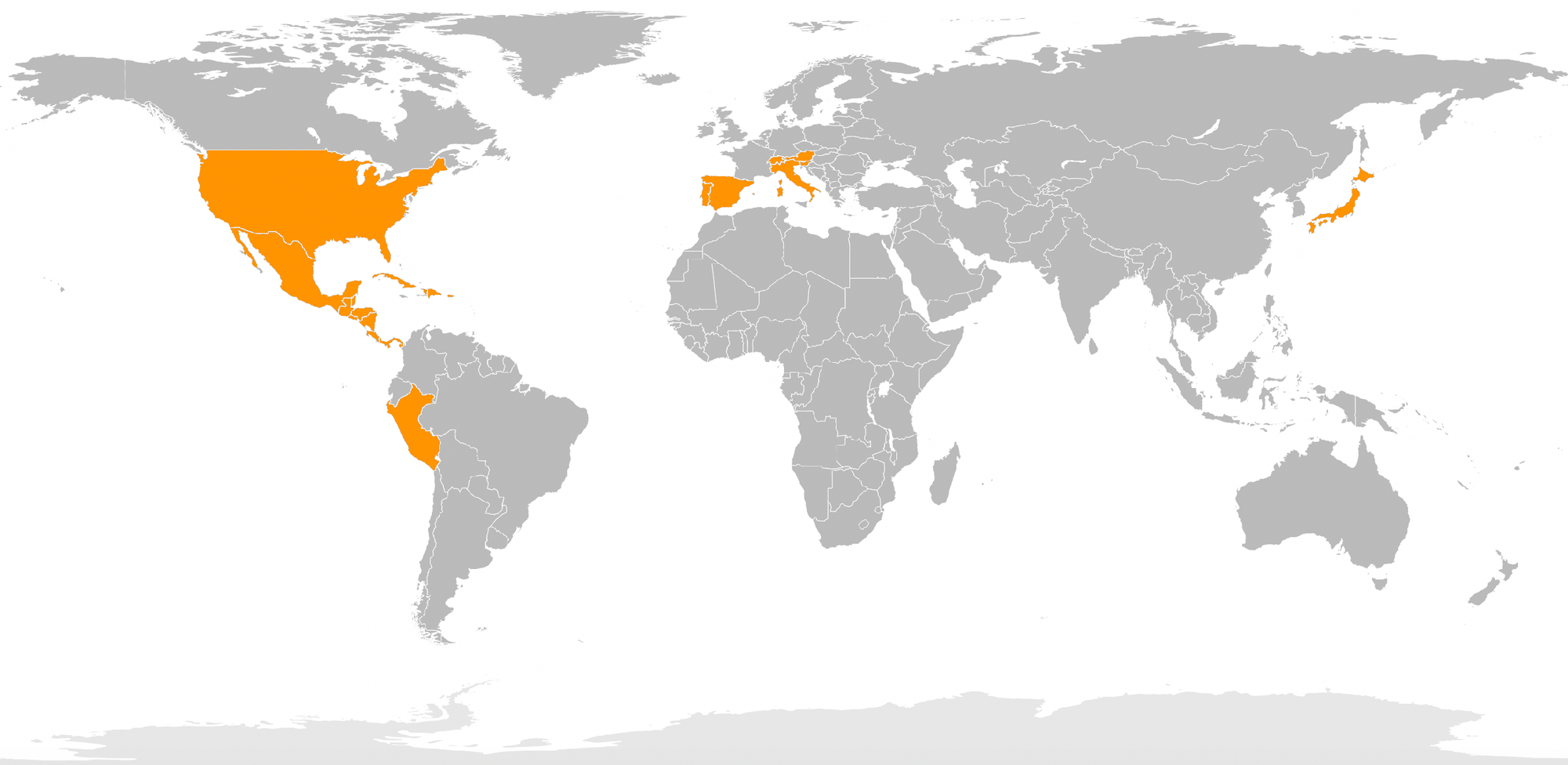
This map shows countries where this wasp has been reported. However, it can also be found in the South Africa, Canada and West Indies.
PHOTO:
Organ Pipe Mud Dauber:
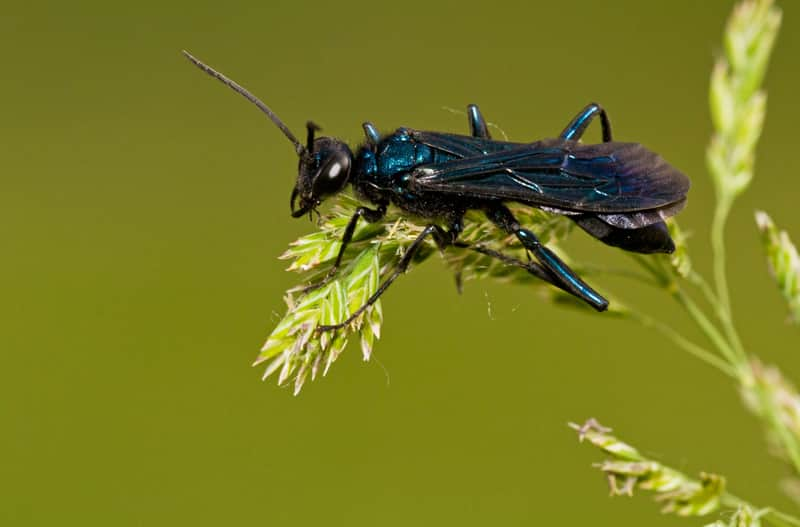
Black-and-yellow Mud Dauber (carrying mud):
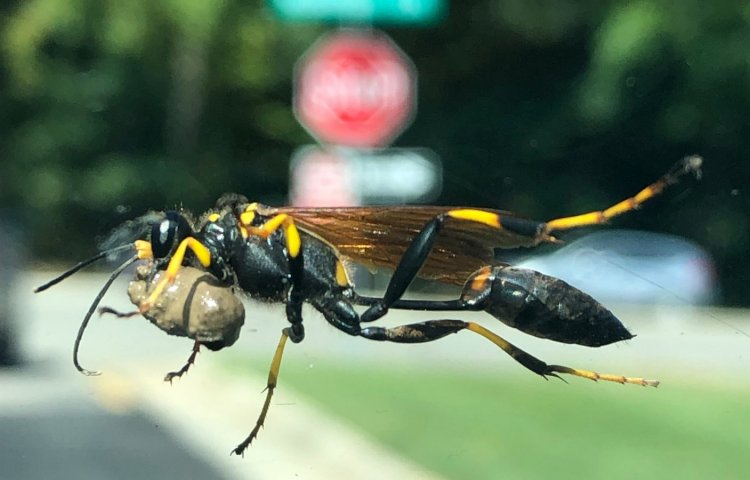
(For more information about the websites consulted in this article, see the Bibliography at the bottom of the website.)
